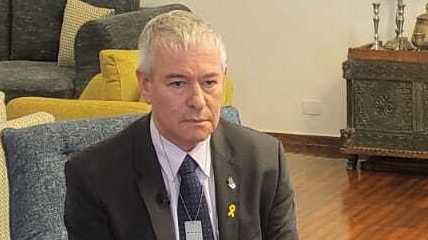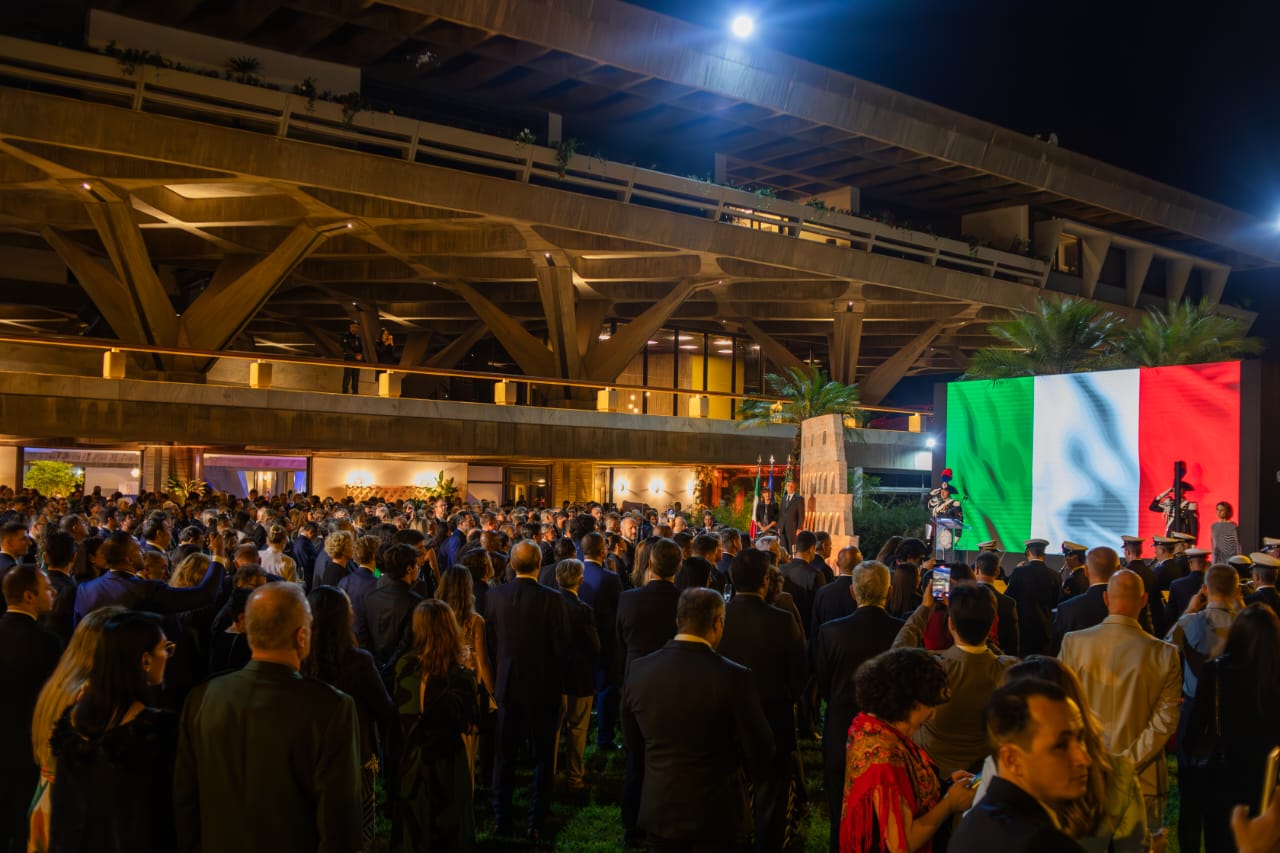Rock in PA: relembre os grandes nomes da música que já passaram pelo palco do festival desde 2022
'Whether rich or poor, it was the longest of nights' How a 2003 blackout brought New York City to a standstill.txt
'Whether rich or bet realpoor, it was the longest of nights': How a 2003 blackout brought New York City to a standstill11 August 2025ShareSaveMyles BurkeShareSaveGetty ImagesOn 14 August 2003, 22 years ago this week, the electricity cut out for more than 50 million people in the US and Canada, as North America experienced a massive power cut. The BBC was in New York City when the lights went out.On a sweltering summer afternoon in 2003, a colossal electricity grid failure tore through the US and Canada's interconnected power systems. The chain reaction caused multiple power plants covering an area as far west as Cleveland and Detroit and as far north as Toronto and Ottawa to shut down. Within minutes, more than 50 million people found themselves without electricity. New York, the largest city in the US, was just one of the many places where everyday life was brought to a sudden standstill on 14 August 2003, 22 years ago this week."The blackout began just before yesterday evening's rush hour, bringing chaos to the traffic-clogged streets," reported BBC correspondent Nick Bryant. "Members of the public were forced to deputise as makeshift cops. Avenues normally jammed with cars and trucks were quickly flooded with people, and thousands more were stranded for many hours on the city's underground trains in stifling heat of almost 100 degrees."2:56WATCH: 'I don’t even know what time it is anymore'.The disruption to New York was widespread and chaotic. It would take emergency services hours to evacuate passengers from around 600 subway and commuter rail cars that were stranded between stations. Many people would have to inch their way in near darkness along subway tunnels to get out. Hundreds more were trapped in lifts when the electricity stopped flowing – or, in the case of the Empire State Building, at the top of the tallest building in the city. Cash machines stopped operating. Areas which used electric pumps stopped receiving water. Refrigerated food and drink in shops and restaurants rapidly perished in the summer heat.As air conditioning stopped working, many people headed outside to escape the soaring heat and New York's streets quickly filled up. Due to the stalled mobile phone networks and defunct televisions, the city's residents struggled to understand what was going on. As it had been just under two years since the 11 September 2001 attacks, some New Yorkers initially feared that the blackout could be terror-related. "There was some talk of a terror thing again," Glenn Schuck, a New York radio reporter, told the American Red Cross Podcast in 2021. "Was this someone else taking out an electric grid so they can come in and attack us in the night? Believe me, there were thoughts about that, a lot."After the attacks of 11 September, this has become a battle-hardened city – Nick BryantStranded commuters on the street crowded around battery-powered radios to listen to rolling news updates and to try to work out how to get home. Some managed to pack onboard the overcrowded buses, although with the traffic lights not working and the city's roads gridlocked, it could take up to four hours just to get out of Manhattan. Others, despite the heat, resorted to trudging home on foot, leading to surreal scenes of thousands of people walking across New York's bridges.Getty ImagesAs air conditioning stopped working, many people headed outside to escape the soaring heat and New York's streets quickly filled up (Credit: Getty Images)As darkness fell, those unable to make it home faced the unappealing prospect of spending the humid night sleeping rough on the city's sidewalks or in the parks. "Thousands of stranded commuters were forced to join the ranks of the city's homeless," reported Bryant. "Whether rich or poor, it was the longest of nights."A series of fires broke out around the city. In an effort to see in the dark, many New Yorkers had lit candles indoors, and curtains and furniture accidentally caught fire. "I just remember it turning into this nightmare situation where it was non-stop," Sharon Hawa, who worked for the American Red Cross at the time, told the organisation's podcast in 2021. "It was like a wildfire happening in the city."Fewer arrests than usualFire crews were called out to more than 60 residential fires that night, with two deaths attributed to the use of fire to provide light. "The borough of Brooklyn alone had 25 working fires in a 24-hour period," said New York Fire Chief Thomas Richardson. "That's a lot for one borough. Typically, in the city we get between a dozen and 20 fires citywide for a 24-hour period." It was far from the first blackout the Big Apple had suffered. In 1977, there was a massive power outage when lightning struck key transmission lines. That time there had been widespread looting and rioting, leading to some 3,800 arrests and more than 1000 fires. But the mood in the city in 2003 was closer to that of the 1965 blackout, in which New Yorkers had come together to help each other and make the best of the situation."Darkness brought more menace but none of the lawlessness and looting which many city leaders feared," said Bryant. "The people of New York are learning to cope with the unexpected. After the attacks of 11 September, this has become a battle-hardened city." In the end, there was little blackout-related crime, with around 100 fewer arrests recorded than usual.1:04WATCH: 'Why could the power system of the world's richest country fail so badly?'The following morning, Bryant walked among the many people who had spent much of the night lying huddled on the city's sidewalks or sleeping propped up against shopfronts. The ones he spoke to seemed calm if somewhat bemused by the experience."I don't even know what time it is anymore because my cell phone died an hour ago, so I've been here since 4pm yesterday afternoon," one unnamed woman told the BBC. "I dozed for about half an hour and then there were some mice running around on the sidewalk, so I decided to get up." Another man who was a visitor to the city said: "As a tourist here I don't know what to expect. It's my first time in New York and I'm sleeping on the streets. But yeah, a weird experience." The US and Canada were quick to point the finger at each other as being responsible for the blackoutWith the power still not working on the morning of 15 August, many New Yorkers again chose to go outside where the temperature was cooler, or to line up to use public pay phones which had remained largely unaffected. Gabriela Mira was one of the people the BBC spoke to, as she waited in a long queue with her six-month-old daughter. "I had to get out of the house," she said. "It was so dark, and everything was off, and I was scared. No air conditioner, the phones – they need electricity. And it's so, so hot."Mayor Michael Bloomberg recommended New Yorkers treat the Friday "as a snow day" and not to go into work. "It wouldn't be the worst thing to take a day off," he said. New York's electricity would be restored later that day, around 29 hours after it stopped. For most of the towns, cities and rural areas hit by the outage, power would be up and running again within 48 hours – although some places would remain without power for up to four days afterwards.The cause of the blackoutIn its immediate aftermath, the US and Canada were quick to point the finger at each other as being responsible for the blackout. The two governments agreed to set up a joint taskforce that traced the first failure back to the power operator FirstEnergy's Eastlake plant in Ohio. Investigators found that a high-voltage power cable had sagged due to the intense heat generated by the electricity flowing through it. This caused the cable to brush against overgrown trees that hadn't been cut back. Safety measures were triggered, automatically shutting that power line down. To compensate, other lines took on increased power loads. But as they heated up, they too sagged, making contact with the trees and shutting down.In HistoryIn History is a series which uses the BBC's unique audio and video archive to explore historical events that still resonate today. Sign up to the accompanying weekly newsletter. An alarm should have alerted FirstEnergy's control room of the deteriorating situation, so they could reroute power. But due to a software bug, the system malfunctioned, leaving technicians unaware what was happening. The electricity grid became overtaxed and ultimately collapsed under the strain, triggering a cascading series of outages throughout eight northeastern US states as well as southeastern Canada. More like this:? How Ellis Island became the gateway to the US? Why Alice Cooper saved the Hollywood sign? The men who broke out of Alcatraz with a spoonA report published in November 2003 blamed the blackout on technological failure and human error. But it also pointed out that relying on voluntary industry standards meant that many problems with the US's ageing power infrastructure were simply not being addressed. Years of under-investment had left the grid struggling to meet the increased electricity demand driven in part by the use of computers and air conditioning. In 2005, the US Congress passed the Energy Policy Act, meaning that the Federal Energy Regulatory Commission (FERC) could approve and enforce reliability standards for power providers.In the years since, efforts have been made to strengthen the US power grid system's resilience. But due to an increase in extreme weather caused by climate change, the country is experiencing more blackouts. In 2024, Climate Central, a non-profit climate science organisation, found that the US had experienced 74% more storm-related blackouts in the last 10 years than the decade before, and that weather was responsible for 80% of all power outages. In 2025, the US Department of Energy warned that without more investment in the grid's capacity and reliability, blackouts could increase by 100 times in 2030.--For more stories and never-before-published radio scripts to your inbox, sign up to the In History newsletter, while The Essential List delivers a handpicked selection of features and insights twice a week.For more Culture stories from the BBC, follow us on Facebook and Instagram.In HistoryHistoryElectricityFeatures













